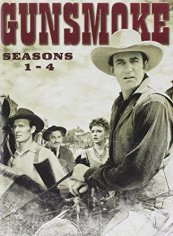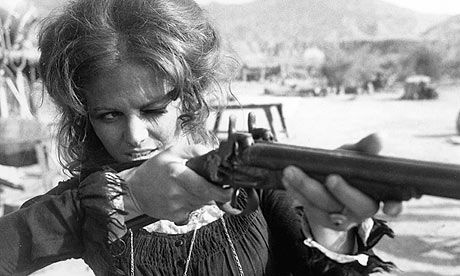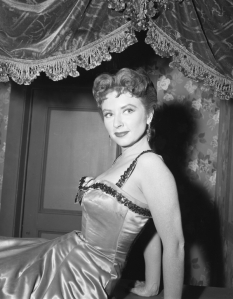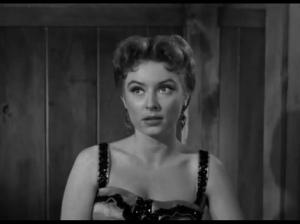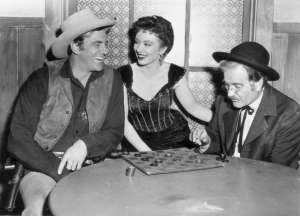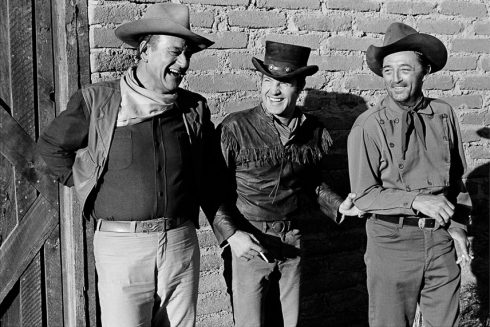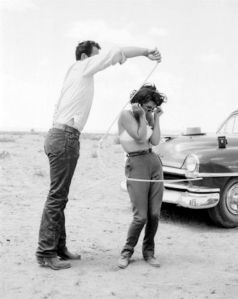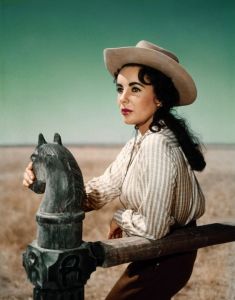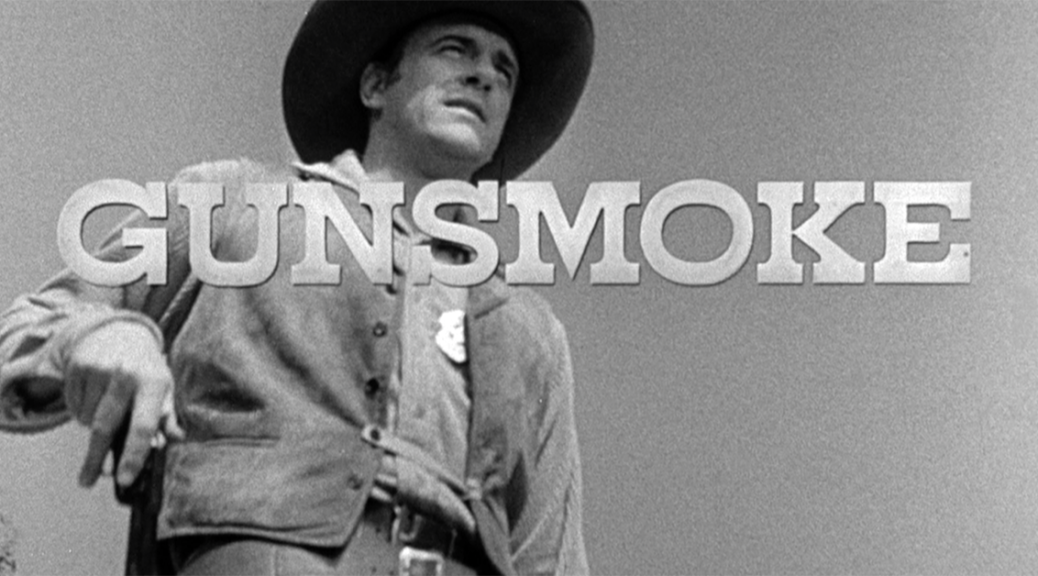Miss Kitty with Marshal Dillon
Monthly Archives: October 2018
Today’s Leading Men of Westerns
Much to the chagrin of today’s lovers of the old west, Western movies just aren’t as prolific as they once were. Gone are the days of guys like John Wayne or Jimmy Stewart who could craft a whole career solely on westerns if they wanted to. But that doesn’t mean that there aren’t great western actors in our own time who have done enough to leave a mark on the western movie terrain.
This article is a fun look at some of the fellas over the last thirty or so years who have taken a turn or two at playing a gun-toting, horse-riding, man-of-the-frontier. There is no order to it; this isn’t a click bait countdown, it’s just a fun accounting of what I wish there was more of.
KURT RUSSELL Why not start with Kurt Russell? He hasn’t played in the most  westerns, but after making a tremendous stamp on western movies as Wyatt Earp in 1993’s Tombstone, he returned to the genre in recent years, starring in Bone Tomahawk and the Hateful Eight. Couple that with a couple movies he did as a young man called the Longest Drive 1 and 2, and he’s certainly done enough to be considered a western movie favorite for today.
westerns, but after making a tremendous stamp on western movies as Wyatt Earp in 1993’s Tombstone, he returned to the genre in recent years, starring in Bone Tomahawk and the Hateful Eight. Couple that with a couple movies he did as a young man called the Longest Drive 1 and 2, and he’s certainly done enough to be considered a western movie favorite for today.
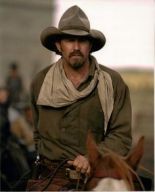 KEVIN COSTNER And since we’re already focused on Wyatt Earp, let’s take a look at Kevin Costner. He took his turn at the lawman of renown just a year after Russell, and this was already after proving himself in Dances with Wolves just four years previous. In addition, Costner had done some teeth-cutting in Silverado in 1985, so his career was already showing a bent towards the western genre. In more recent years Costner featured in the Hatfield’s and McCoy’s on History Channel, helping to get the project made, and showing his heart for the old timey topics. However, the best role of his career, and the one that proves his worth as a western hero more than any other was in Open Range. Arguably one of the better westerns ever made, Costner shows he could easily make a living playing nothing but a gunman from the west, whether he chose to or not.
KEVIN COSTNER And since we’re already focused on Wyatt Earp, let’s take a look at Kevin Costner. He took his turn at the lawman of renown just a year after Russell, and this was already after proving himself in Dances with Wolves just four years previous. In addition, Costner had done some teeth-cutting in Silverado in 1985, so his career was already showing a bent towards the western genre. In more recent years Costner featured in the Hatfield’s and McCoy’s on History Channel, helping to get the project made, and showing his heart for the old timey topics. However, the best role of his career, and the one that proves his worth as a western hero more than any other was in Open Range. Arguably one of the better westerns ever made, Costner shows he could easily make a living playing nothing but a gunman from the west, whether he chose to or not.
JEFF BRIDGES On the heels of Open Range there has been a very modest proliferation of relatively big-budget westerns. One of the more acclaimed was the Coen brothers’ 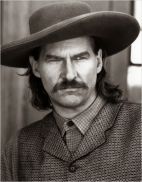 True Grit of 2010. This movie really puts Jeff Bridges into the category of a modern western leading man. He did a great job as Rooster Cogburn, and did an equally wonderful job as Wild Bill Hickok in 1995. Those two roles put him on the frontier map, but they’re anchored by the movies Bad Company (1972) and Hearts of the West (1975) when he was still a new actor on the scene, as well as with the modern-setting western Hell or High Water. Five movies with two very significant roles (Rooster & Wild Bill) definitely earn him recognition, but in a fun turn, we can cap him off with his portrayal in R.I.P.D., where he plays an old west marshal six-gunning against some unruly dead folks.
True Grit of 2010. This movie really puts Jeff Bridges into the category of a modern western leading man. He did a great job as Rooster Cogburn, and did an equally wonderful job as Wild Bill Hickok in 1995. Those two roles put him on the frontier map, but they’re anchored by the movies Bad Company (1972) and Hearts of the West (1975) when he was still a new actor on the scene, as well as with the modern-setting western Hell or High Water. Five movies with two very significant roles (Rooster & Wild Bill) definitely earn him recognition, but in a fun turn, we can cap him off with his portrayal in R.I.P.D., where he plays an old west marshal six-gunning against some unruly dead folks.
SAM ELLIOTT Sam Elliott stands out as the most prolific western actor of recent years. He got his start in westerns and has remained a go-to whenever a believable western man is needed. Rather than recount his resume with whimsical verbiage, I’ll simply post his record and let the reader sift through the evidence: The Sacketts (1979), Wild Times (1980), Shadow Riders (1982), Yellow Rose (TV Show, 1983), Houston: The 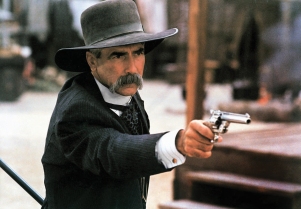 Legend of Texas (1986), Quick and the Dead (1987), Conagher (1991), Gettysburg (1993), Tombstone (1993), The Desperate Trail (1994), Buffalo Girls (1995), The Ranger, the Cook, and a Hole in the Sky (1995), Rough Riders (1997), Big Lebowski (1998), Hi-Lo Country (Modern, 1998), You Know My Name (1999), The Ranch (TV Show, 2016). Yes, that’s right, I included the Big Lebowski. No, it’s not a western, but it’s significant that in that movie Elliott plays the conscious of the western pioneering spirit, juxtaposed against the lazy, jaded attitudes of today’s Los Angeles.
Legend of Texas (1986), Quick and the Dead (1987), Conagher (1991), Gettysburg (1993), Tombstone (1993), The Desperate Trail (1994), Buffalo Girls (1995), The Ranger, the Cook, and a Hole in the Sky (1995), Rough Riders (1997), Big Lebowski (1998), Hi-Lo Country (Modern, 1998), You Know My Name (1999), The Ranch (TV Show, 2016). Yes, that’s right, I included the Big Lebowski. No, it’s not a western, but it’s significant that in that movie Elliott plays the conscious of the western pioneering spirit, juxtaposed against the lazy, jaded attitudes of today’s Los Angeles.
TOM SELLECK Recollecting some of Elliott’s films such as Sacketts & Shadow Riders brings to mind another western stalwart who is deeply under appreciated. The man of the mighty mustache,…Tom Selleck. Only Elliott has done more westerns than Selleck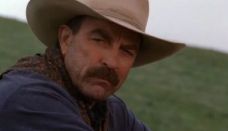 and likewise, Tom Selleck has peppered his whole career with the genre, consistently showing up on film in boots and cowboy hat, from the Sacketts in 1979, to Monte Walsh in 2003. My only complaint being that he needs to take a break from Jesse Stone to do another western or two; it’s about time! And, as with Sam Elliott, I’ll just post the list for the reader: Sacketts (1979), Concrete Cowboys (1981, TV Show), Shadow Riders (1982), Quigley Down Under (1990), Ruby Jean & Joe (Modern 1996), Last Stand at Saber River (1997), Crossfire Trail (2001) Monte Walsh (2003), Twelve Mile Road (Modern, 2003).
and likewise, Tom Selleck has peppered his whole career with the genre, consistently showing up on film in boots and cowboy hat, from the Sacketts in 1979, to Monte Walsh in 2003. My only complaint being that he needs to take a break from Jesse Stone to do another western or two; it’s about time! And, as with Sam Elliott, I’ll just post the list for the reader: Sacketts (1979), Concrete Cowboys (1981, TV Show), Shadow Riders (1982), Quigley Down Under (1990), Ruby Jean & Joe (Modern 1996), Last Stand at Saber River (1997), Crossfire Trail (2001) Monte Walsh (2003), Twelve Mile Road (Modern, 2003).
TOMMY LEE JONES & ROBERT DUVALL I think it’s probably about time to acknowledge the godfathers of modern western cinema, Robert Duvall and Tommy Lee Jones. The recognition for Lonesome Dove is probably enough for either of these two to be held in the esteem in which they are, but each have made a nice collection of westerns throughout their careers, and are every bit deserving of the regard they are given.
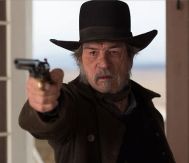 JONES Starting with Tommy Lee Jones, who proved himself well, atop a horse and on the trail, in Lonesome Dove. He had done a western just a year before in Stranger On My Land, but really cements himself as a western lead with Good Ol’ Boys in 1995 and The Homesman in 2014. You can add to this great handful The Missing in 2003, and the modern western movies Three Burials and No Country For Old Men.
JONES Starting with Tommy Lee Jones, who proved himself well, atop a horse and on the trail, in Lonesome Dove. He had done a western just a year before in Stranger On My Land, but really cements himself as a western lead with Good Ol’ Boys in 1995 and The Homesman in 2014. You can add to this great handful The Missing in 2003, and the modern western movies Three Burials and No Country For Old Men.
DUVALL And now we can focus on Robert Duvall, who, given his role as Gus McRae, is probably this generations John Wayne when it comes to the hearts of todays western fan. Perhaps Val Kilmer’s Doc Holliday is a rival in popularity, based on his sheer hipness, but Gus McRae stands out as the western-man’s man. And after adding to his western film resume, he returned to the trail-riding role that made him so endearing in 2006’s Broken Trail, which was an exceptional trail riding yarn in it’s own right. And, of equal worth, was his role as Boss Spearman in Open Range. It’s just hard to beat Robert Duvall when it comes to western portrayals. And finally, in order, here’s his list of western movies: Lonesome Dove (1989), Convicts (1991), Geronimo (1993), Gods & Generals (2003), Open Range (2003), Broken Trail (2006), A Night in Old Mexico (Modern, 2013) Wild Horses (Modern, 2015). Keep in mind that this is a relatively modern collection and doesn’t take into consideration movies and TV appearances he made in the ’60’s.
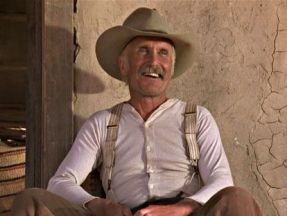
************
There are a couple other steadfast actors who need a mention, and they are Gene Hackman and Ed Harris. Hackman for his standout role in Unforgiven, and Ed Harris for his equally impressive turn in Appaloosa.
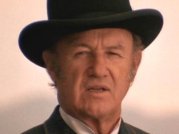 GENE HACKMAN Hackman has rounded out his western resume with early career films Zandy’s Bride (1974), and Bite the Bullett (1975), and then returned to the genre in the early 90’s with zest, pumping out four westerns in four years: Unforgiven (1992), Geronimo (1993), Wyatt Earp (1994), and The Quick and the Dead (1995),
GENE HACKMAN Hackman has rounded out his western resume with early career films Zandy’s Bride (1974), and Bite the Bullett (1975), and then returned to the genre in the early 90’s with zest, pumping out four westerns in four years: Unforgiven (1992), Geronimo (1993), Wyatt Earp (1994), and The Quick and the Dead (1995),
 ED HARRIS Ed Harris, conversely of most others mentioned in the article, came to westerns generally later on in his career. His first was Riders of the Purple Sage in 1996 and he didn’t do another for twelve years when he starred in Appaloosa. After doing a couple more, Sweetwater (2013) and Frontera (2014), he showed up in HBO’s West World in 2016. Appaloosa is certainly the highlight of the group, but it’s great to see him doing more in the genre recently.
ED HARRIS Ed Harris, conversely of most others mentioned in the article, came to westerns generally later on in his career. His first was Riders of the Purple Sage in 1996 and he didn’t do another for twelve years when he starred in Appaloosa. After doing a couple more, Sweetwater (2013) and Frontera (2014), he showed up in HBO’s West World in 2016. Appaloosa is certainly the highlight of the group, but it’s great to see him doing more in the genre recently.
************
And what about the ever-reliable “worthy-of-mention” category? Let’s take a look.
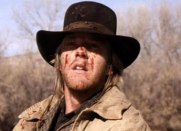 Kiefer Sutherland started early with a prominent role as Josiah “Doc” Scurlock in Young Guns (1988) and Young Guns 2 (1990). He was next seen representing the modern rodeo cowboy in The Cowboy Way (1994) and Cowboy Up (Modern, 2001). Then, in 2015, he participated in a bit of a passion project with his real life father, Donald, playing his onscreen father in the movie Forsaken. His career may not be dominantly western, but it’s great to see him getting back to the western in recent years, and taking such an active part in getting it done.
Kiefer Sutherland started early with a prominent role as Josiah “Doc” Scurlock in Young Guns (1988) and Young Guns 2 (1990). He was next seen representing the modern rodeo cowboy in The Cowboy Way (1994) and Cowboy Up (Modern, 2001). Then, in 2015, he participated in a bit of a passion project with his real life father, Donald, playing his onscreen father in the movie Forsaken. His career may not be dominantly western, but it’s great to see him getting back to the western in recent years, and taking such an active part in getting it done.
 Val Kilmer is certainly a fan favorite after becoming the face of new westerns for a whole generation in 1993. His Doc Holliday in Tombstone is easily the slickest gun-toter to be on film, and it, alone, makes him a worthy western actor. He also starred in Gore Vidal’s Billy the Kid in 1989, and then made a small western comeback with Comanche Moon (2008) and Wyatt Earp’s Revenge (2012). It’d be great to see him take on another role to rival his Doc Holliday, but that would, admittedly, be tough to top.
Val Kilmer is certainly a fan favorite after becoming the face of new westerns for a whole generation in 1993. His Doc Holliday in Tombstone is easily the slickest gun-toter to be on film, and it, alone, makes him a worthy western actor. He also starred in Gore Vidal’s Billy the Kid in 1989, and then made a small western comeback with Comanche Moon (2008) and Wyatt Earp’s Revenge (2012). It’d be great to see him take on another role to rival his Doc Holliday, but that would, admittedly, be tough to top.
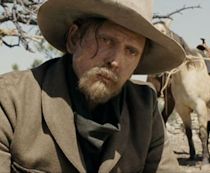 Perhaps the most under-the-radar young-ish western actor of today is Berry Pepper. He’s’ appeared in two Lonesome Dove outputs, Lonesome Dove: the Series (1995), and Lonesome Dove: the Outlaw Years (1996), as well as Three Burials (Modern, 2005), True Grit (2010), and Lone Ranger (2013). Not only does he boast a robust handful of western films, but he’s in good company, too. In Three Burials he co-starred with Tommy Lee Jones, in True Grit he shared the screen with Jeff Bridges, and though Lone Ranger was not the highest reviewed, it was a very big budget movie. On top of these, even though he was not a part of the original Lonesome Dove series, it’s a great studio property to be a part of.
Perhaps the most under-the-radar young-ish western actor of today is Berry Pepper. He’s’ appeared in two Lonesome Dove outputs, Lonesome Dove: the Series (1995), and Lonesome Dove: the Outlaw Years (1996), as well as Three Burials (Modern, 2005), True Grit (2010), and Lone Ranger (2013). Not only does he boast a robust handful of western films, but he’s in good company, too. In Three Burials he co-starred with Tommy Lee Jones, in True Grit he shared the screen with Jeff Bridges, and though Lone Ranger was not the highest reviewed, it was a very big budget movie. On top of these, even though he was not a part of the original Lonesome Dove series, it’s a great studio property to be a part of.
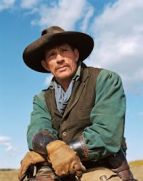 Finally, Viggo Mortensen, Thomas Haden Church, and Ethan Hawke each deserve a look. Mortensen got his first western role in Young Guns 2, and then later did the movie Hidalgo in 2004. Though not a true western, he still played a cowboy in the 1890’s. His most defining western role was as Everett Hitch in Appaloosa, alongside Ed Harris. Thomas Hayden Church has only
Finally, Viggo Mortensen, Thomas Haden Church, and Ethan Hawke each deserve a look. Mortensen got his first western role in Young Guns 2, and then later did the movie Hidalgo in 2004. Though not a true western, he still played a cowboy in the 1890’s. His most defining western role was as Everett Hitch in Appaloosa, alongside Ed Harris. Thomas Hayden Church has only  done two westerns to date, but they’re good ones to be in. First playing Billy Clanton in Tombstone, and then starring with Robert Duvall in Broken Trail. Some have criticized his stiffness in the latter of the two movies, but considering that most cowboys were hard working roughnecks, and not camp cut-ups, his performance comes off appropriately stoic. The final entry is perhaps the last name one might expect, but given his new avenue towards westerns, including three western movies in two years, it’s nice to see this turn in direction. Ethan Hawke first starred in A Valley of Violence in 2016, a spaghetti-western styled film, then co-featured in the recent remake of The Magnificent 7, and is slated to star in a movie about a kid who witnesses the encounter between Pat Garrett and Billy the Kid, conveniently titled The Kid.
done two westerns to date, but they’re good ones to be in. First playing Billy Clanton in Tombstone, and then starring with Robert Duvall in Broken Trail. Some have criticized his stiffness in the latter of the two movies, but considering that most cowboys were hard working roughnecks, and not camp cut-ups, his performance comes off appropriately stoic. The final entry is perhaps the last name one might expect, but given his new avenue towards westerns, including three western movies in two years, it’s nice to see this turn in direction. Ethan Hawke first starred in A Valley of Violence in 2016, a spaghetti-western styled film, then co-featured in the recent remake of The Magnificent 7, and is slated to star in a movie about a kid who witnesses the encounter between Pat Garrett and Billy the Kid, conveniently titled The Kid.
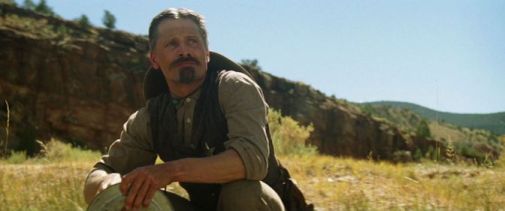
************
Sunday Funnies – 07

Doc Holliday Wild West Game
Released in 1960 when westerns were in their heyday in American culture, the Doc Holliday Wild West Game was a simple opportunity to market yet another package of fun with no real depth to it. There’s nothing wrong with the game, but it’s a very basic spin-and-move operation that is designed with kids in mind; think 6-12 years old range. Designed for 2-4 players, each person takes both a Doc Holliday piece as well as a bandit piece, and then spin and move, trying to reach the final space before their opponents.
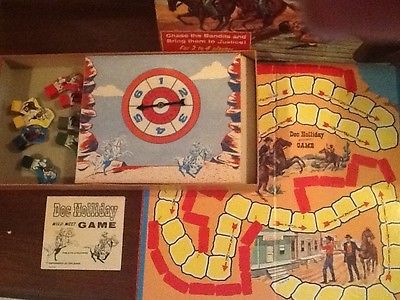 These days the real value of a game like this one is the collectability, but it can still be fun to sit down for a breezy session of classic board game competition. Through the 50’s and 60’s there were so many of these type of games produced that it would be pointless to spotlight them all, but take games like this one or the Wyatt Earp Life and Legend board game and you pretty much know what you got whenever you see something from the era.
These days the real value of a game like this one is the collectability, but it can still be fun to sit down for a breezy session of classic board game competition. Through the 50’s and 60’s there were so many of these type of games produced that it would be pointless to spotlight them all, but take games like this one or the Wyatt Earp Life and Legend board game and you pretty much know what you got whenever you see something from the era.
Claudia Cardinale
Lawmen and Their Rankings
The purpose of this post is to help clear up what I suspect is an area of confusion for most enthusiasts of the Old West. You may notice when hearing or reading stories of the characters in Old West towns, or rather particularly those in positions of law, being referred to by different titles. You may hear Sheriff Masterson or Marshall Earp, etc., and sometimes these titles may feel like some sort of an ambiguous blend of the same role. So I wanted to give sort of a cheat sheet for anyone who was trying to figure out the differences between the different titles.
There are some pretty obvious titles and then there’s a few that are a little less common. Anytime you watch a western you will inevitably hear somebody say, “go get the sheriff”, or “Someone get the Marshal”, with no real indication of what that means. In a fictional movie or television show it probably doesn’t matter too much, but when we’re trying to learn about the real law men, it helps to know what the titles mean and what the distinctions are, and most importantly, what value those titles really held.
From top to bottom, probably the most powerful position would be that of a U.S. Marshal. Below that would be the sheriff, then a city, town, or village marshal. Underneath that you would have a deputy marshal, and then you would have positions such as constable or night watchman.
The US Marshal appellation is a little bit of a misnomer because when a lawman was referred to as a U.S. Marshal the conventional use was justifiable, even though in reality he was a deputy US Marshal. An actual US Marshal was a figurehead who most often sat in a state or territory capital and functioned more as a chief of police, dealing with politicians and bureaucrats. This US Marshal had the authority to pick and assign Deputy US Marshals who did all of the field work and law enforcement in a given territory. So, for example, when Virgil Earp was a marshal in Tombstone he arrived there as a US Deputy Marshal. Yet, when someone said Marshal Earp in reference to Virgil, they would be accurate in calling him Marshal, keeping in mind he was technically a deputy of the Arizona territory US Marshal.
This position of US Marshal that was held by Virgil and Wyatt, at different times, as well as other characters of the West, had the ability most often to also deputize another level of assistance. (Although this is not a term that’s ever been used, you could say sort of a deputy’s deputy.) What this means is if, say, Wyatt Earp was a US Marshal and out in the field hunting down Cowboys, then if he needed assistance, he was able to recruit someone and give them a field appointment. This field appointment allowed someone to operate in a legal capacity with the US Marshal, who was technically a deputy US Marshal. This is what is going on when you hear the term marshal being thrown around.
Now let’s look at what a sheriff what does, what Sheriff means, and what were his boundaries? The sheriff worked for the county. Whereas a US Marshal had jurisdiction over the entirety of the state or territory that he was in, a sheriff was bound to the borders of the county that he served. Bat Masterson is a perfect example of this. He served as the sheriff of Ford County in Kansas, which is also where Dodge city was located. As the sheriff he handled crimes that were committed in the county but not in the municipality of Dodge City. However, as a sheriff operating in a jurisdiction that contained a town (obviously), he could be duly expected to give a hand whenever it was needed. Not to mention, of course, that his friendship with Wyatt Earp would naturally lead to assistance when one needed it from the other. And like most all other positions of law enforcement, the sheriff would often have deputies who would operate within the same jurisdiction. When in a town, the sheriff was expected to acquiesce to the municipal authorities; he could be expected to help out, but was likewise expected to not get in the way of the local authorities to handle issues.*
What of the municipal authorities? A town, city, or Village lawman usually went by the title of marshal. A town marshal, or a village Marshall, or a city marshal was really only differentiated by the size of the municipality; a village obviously being smaller than a city, and a town being somewhere in between. The town Marshal had authority within the city boundaries and was expected and obligated to handle the legal duties within that town. This often meant not just stopping crime or going after criminals like horse thieves and such, but could also mean collecting taxes, collecting fees, and other whatnot. This position often held a great opportunity for bonuses based on arrests and services rendered, so it could be a lucrative position. It is important to remember that when someone says marshal they could be referring to a state or territory marshal who was appointed by the US Marshal out of the capital, or they could be referring to a local marshal, who could have been appointed by a council or voted on by the people. Most often, however, a town marshal was appointed by a council.
Another position that’s often mentioned, but not nearly as prominent as others, is that of constable. The reason we don’t hear so much about constables being involved in one exciting story or another is the fact that, frankly, most of the stories that we hear over and over are the more thrilling ones and the position of constable just didn’t lend itself to thrilling adventures. As constable you were generally expected to deliver court papers, collect taxes, deliver summons, serve notices, etc. You may be the head law man in a town as constable, but generally speaking, if that were the case then it was probably a pretty small town and not one that had a lot of excitement. Typically, by the time a town was big enough to be wary of much danger and excitement, they would probably have already established a town marshal or have a resident Sheriff. The Constable was almost more of a clerk-of-the-court position, working primarily as an aid to the courthouse. So, while you will hear of a constable mentioned once in a while, it’s very seldom that you will hear of a town constable being involved in a dramatic gunfight.
The last couple of titles probably aren’t special enough to consider whether one ranks above the other; they are night watchman and special police. We’ll start with special police because it probably is a more glamorous position than night Watchman. A special-police was someone who was in law enforcement but not typically as a full-time career. The best example of this would be Dodge City during the cattle season. During the winter the local marshal may need a deputy or two, but during the cattle season when the town is overrun with Cowboys drunk and partying all night, there would be a need for extra enforcement, so special policemen were signed on for the season. You may sign a couple in May at the start of the season, and by June you may have an additional half dozen. During the thick of this time it would be all-hands-on-deck at all different hours, but then as the season waned in the later months the special police would be let go as they became less necessary. You won’t often hear about policeman so-and-so when reading about the old west, but you may come across something that says Morgan Earp was a special policeman in Dodge City during the season of 76, or other items like that. So when you hear this in reference to a character you’ll know it means that, yes, he was in law enforcement, but it was probably only for a limited time where extra enforcement was needed.
Probably the lowest position of law enforcement in the old west, but also possibly the best way to get your foot in the door if you didn’t have a good reputation as an army Scout, or Buffalo hunter, or general tough guy, was a position as night Watchman. With all due respect to the men who served as night watchman, this position wasn’t much more than the modern day security guard in an orange vest standing around at the local bus station. Generally your position as a night watchman was to stroll the streets at night and make sure nobody was passed out drunk on the sidewalk, or that wild dogs weren’t chewing up somebody’s sacks of flour sitting out front of their store; that sort of thing. There wasn’t a lot expected of a night watchmen as long as you were on the job. Essentially, they were meant to be a presence, or a deterrent to anyone who might do something stupid as they’re stumbling out of the local saloon drunk and done for the evening. Virgil Earp served as a night watchmen in Prescott, and it was basically how he earned a step up to constable.
Any of these head positions, such as US Marshal, Sheriff, and Town Marshal all had deputies. So you could be a deputy, a field deputy to a US Marshal. You could be a deputy sheriff, which could be a full-time position, or you could be a town deputy, which could also be a full-time position, and of course the role of deputy is pretty self-explanatory once you know the head position that they serve under.
These are the primary lawman titles, and a lot of the most fascinating men of the old west held them. They weren’t always held by good guys and even the “good guys” who held the positions were sometimes suspected of utilizing the position to their own personal ends.**
*This dynamic was at the center of one of the big struggles in the town of Tombstone.
**Wyatt Earp has been accused of this, fairly or not, by many of his detractors.
In order of prominence
- US Marshal – Operating authority throughout a state or territory
- Sheriff – Authority for a given county within a state or territory
- Town Marshal – The local ranking officer within a municipalities boundaries
- Special Police – Hired for special services, or limited time work; often for a season
- Constable – Most commonly a hand of the local court, minimal law enforcement
- Night Watchman – Security guard to make sure there’s no trouble
Sunday Funnies – 06
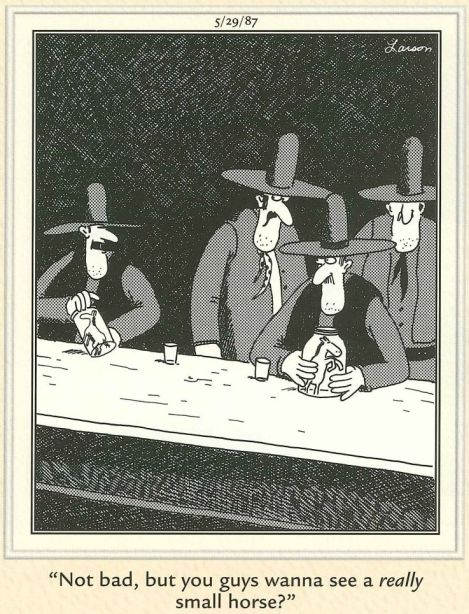
Deadwood (Boardgame)
Cotemporary games focused on the old west are few and far between, but when one can be had I certainly like to give it a look. Deadwood is a fairly simple set-up to go with a fun looking board. Released in 2011, the object is to have the most money by the end of the game, which comes about once the train reaches town. Each player has a ranch and cowboys, and has to choose how to use them in order to come out ahead in the end.
A lot of the fun of this game is the progression of growth as you try to get ahead. Both the town and the rail line are growing, and this effects how you play. You build the town by placing buildings which each have different attributes, and through out the game you’ll have to decide to either leave your cowboys in a building and gain it’s special advantage, or return them to the ranch where they can be utilized as a resource for your next turn.
 This is a great game, and a lot of fun comes in the box, so I really recommend getting it for you and your family or friends, whoever you play with. But now let me warn you of some pretty common silliness: the point of the game is to build the town of Deadwood before the train arrives, all set in a classic western desert setting. Obviously Deadwood wasn’t in the desert, not anywhere near it, nor was the train on it’s way at the time the town was being built up. And probably most of all, Deadwood was a gold mining town, not a cattle town. All of this is purely academic when it comes to sitting down and enjoying some table-top fun, but for any novice student of the old west, these things will probably stand out.
This is a great game, and a lot of fun comes in the box, so I really recommend getting it for you and your family or friends, whoever you play with. But now let me warn you of some pretty common silliness: the point of the game is to build the town of Deadwood before the train arrives, all set in a classic western desert setting. Obviously Deadwood wasn’t in the desert, not anywhere near it, nor was the train on it’s way at the time the town was being built up. And probably most of all, Deadwood was a gold mining town, not a cattle town. All of this is purely academic when it comes to sitting down and enjoying some table-top fun, but for any novice student of the old west, these things will probably stand out.
That said, it’s a great game, and these aesthetic discrepancies shouldn’t stop anyone from indulging the good times contained herein. It’s currently only twelve dollars on Amazon for a new copy, so it’s even a great price!
Liz Taylor
New Wyatt Earp TV Show
Travis Fimmel, who played Ragnar Lothbrok on History Channel’s Vikings, has made his departure and is ready to take on new projects. This has resulted in a potential Wyatt Earp anthology show to be produced, starring Fimmel, who has also pitched the show and is helping to get it made. There are no dates set yet, though the latest guesses have it looking like it could start production as soon as he completes a current short-film project he’s working on. It’s important to keep in mind that many shows and movies are bandied about and then die a slow death before ever being made into something real. Fimmel has good relationships with History Channel and those behind the scenes there, so the prognosis is on the positive side of things, but until production starts and cameras are rolling, we have to simply wait with fingers crossed.
The idea, as reported so far, is to introduce Wyatt Earp to the western frontier, primarily in Kansas, and especially in Dodge city. The show will build to the events of the Tombstone shootout and be a work up about how the man came to be who he was, and how he came to that moment. Along the way there will be focus on the people in Wyatt’s life and the associations he held. Friendships with fellow dangerous men like Bat and Doc will be included, and, with a little luck, perhaps we could even see a screen version of Luke Short.
There’s a couple of pluses and minuses that can be assessed even at this early stage. For one, Travis Fimmel has a good look for Wyatt Earp. I haven’t seen him with a swooping mustache yet, but just his eyes and general face shape seem to belie a touch of the stoic gunman. He has expressed his reasons for wanting to see this made, and while I don’t know that it qualifies as a “passion project”, he does carry some level of personal interest in seeing it get done, and that can keep the fires burning for a sustained period of time, rather than seeing it smoke out right away. In short, Fimmel’s participation as both actor and producer should help to make this produced and be decent quality.
On the flip side of things, Hollywood seems to never really understand history, and when they don’t understand history they seem to think they can hide the fact by filling in with lots of cheesy tropes that they think are true to the time. The show is planned to be a History Channel project, so this can offer some hope, but even History Channel sometimes seems to be remiss at presenting accurate history. Additionally, everyone seems to have their own take on Wyatt Earp. This is because he was a fairly complex man who lived a complex life. Some will say that he was a thief and pimp, others will argue that he was an upright officer who valued life. Most all would be able to back up their conviction with solid evidence. Like I say, it was a complex life.
Where this element of complexity becomes an issue is when people try to tell the tale. Too often Wyatt is either unfairly vilified, or unaccountably praised. It’s true that in life he was much more often on the side of right, but it’s become the more contemporary trend to sensationalisticly pick over the darker periods of the mans life and slap the label of bad guy on him. The reason this is relevant to this show is because Fimmel states his reason for wanting to do this project is that he is fascinated by peoples scandalous journey’s into infamy. This sounds like a predisposed notion to cast Earp as a villain, and we don’t need another “Doc” (1972).
It’s still very early, so no judgments should be made at this point, but to do justice to a complex man living a complex life it would be best to avoid pre-labeling him as one thing or another. Fimmel said he’s fascinated by the journey, so let’s hope that means they really investigate it and do it intelligently, and fairly.
Sunday Funnies – 05
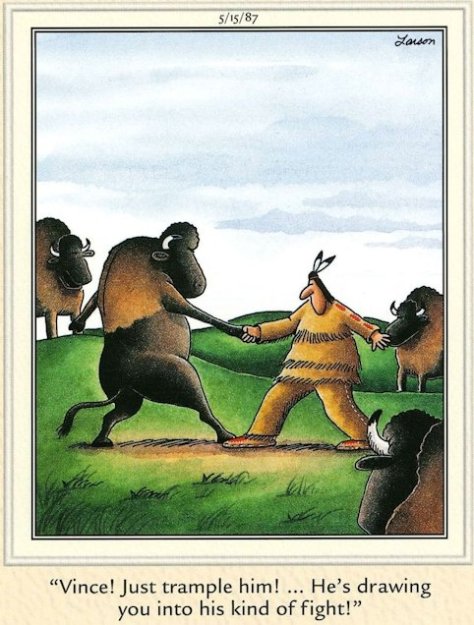
Gunsmoke! (1955-1975)
I think everyone who knows westerns, knows Gunsmoke. It was easily the king of western television shows and could possibly be the king of all American tv shows. It lasted for 20 seasons, making it the longest running primetime drama in television history until Law & Order tied with it’s own twenty seasons. However, because of Gunsmoke’s much longer seasons, often 39 episodes, it has nearly 200 more episodes than Law & Order. In fact, the Simpsons, which is the longest running scripted weekly TV show, didn’t produce more shows than Gunsmoke’s 635 until it’s 29th season. That shows you just how stalwart the folks of Dodge City, Kansas really are.
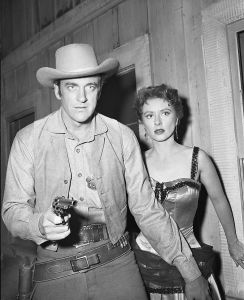
The show started as a half-hour program but after the 6th season was extended to an hour, and after the 8th season it went from black and white to color. But before it ever went out over the television airwaves it first went across the wires as a radio show started in 1952. Due to the show’s popularity, CBS determined to make a TV adaptation, staying with the same tone and purpose, but recasting with faces for TV (and in the case of the character Matt Dillon, a body for television, also).
 In 1955 two new shows were put on the air that shaped the future of television in America for some time to come. Those shows were The Life and Legend of Wyatt Earp and Gunsmoke. One was directly about Wyatt Earp, obviously, and the other one was in sort of an indirect, unintentional way. Gunsmoke never set out to be a Wyatt Earp show but with a changed name, instead it sort of embodied the story of the west, in which Wyatt Earp was integral, as well as being front and center in America’s collective conscience at the time. Matt Dillon, in essence, embodied the spirit of the tough American lawman that faced death in the form of rowdies coming-and-going at will. Matt Dillon embodied the men like Wyatt Earp, Bat Masterson, Bill Tilghman, and others who patrolled the streets of Dodge City during its wild-and-wooly days.
In 1955 two new shows were put on the air that shaped the future of television in America for some time to come. Those shows were The Life and Legend of Wyatt Earp and Gunsmoke. One was directly about Wyatt Earp, obviously, and the other one was in sort of an indirect, unintentional way. Gunsmoke never set out to be a Wyatt Earp show but with a changed name, instead it sort of embodied the story of the west, in which Wyatt Earp was integral, as well as being front and center in America’s collective conscience at the time. Matt Dillon, in essence, embodied the spirit of the tough American lawman that faced death in the form of rowdies coming-and-going at will. Matt Dillon embodied the men like Wyatt Earp, Bat Masterson, Bill Tilghman, and others who patrolled the streets of Dodge City during its wild-and-wooly days.
What Gunsmoke did intend to do, however, was to put a show out that covered more of the grit and hardships that were closer to the reality of the western frontier. Prior to Matt Dillon, the heroes, the lawmen, they were always right; they were always pure; their hats never got dirty. Gunsmoke endeavored to tell a tale where no one was squeaky-clean. Not because they were bad people, but because they were people living in a hard place. Where conditions took a toll, and survival sometimes challenged you in ways that took you to a place you didn’t expect. So in the end, what Gunsmoke was, was a western for adults, where sometimes people do die, and where sometimes the hero isn’t sure what’s right.
In spite of all this determination to give a grittier, more grounded look back at the times, Gunsmoke was still a great show with loveable characters and lots of heart. It’d be hard to watch and not come away felling good about what you just saw. This, I believe, is due to the quality, earnest performances given by the cast. You knew that no matter what, Marshal Dillon was going to do what was right; it was in his make-up. You knew that Chester was someone you would hope to run into if you ever went to Dodge. And as cantankerous as ol’ Doc could get, he still had his caring nature and was the kind of guy you wanted living in your town.
 The show saw changes of course, besides just going from thirty minute to sixty minute episodes, and eventually some of the most loved characters went away. Chester left in ’64 and was replaced by Festus. Although Chester had been a light-hearted presence with a loveable demeanor, Festus took the part of sidekick to near intentional comedy. Not to a degree that would undermine any of what was being done, but enough to notice a difference from that of his predecessor. And during this time of transition another familiar face was on the show, though he may not have been so familiar to anyone at the time. The macho mustachioed man named Burt Reynolds played a half-breed regular whose father had been killed. He didn’t stay on the show for long, but he was there when Chester bowed out, and stayed until not too long after Festus was established as the new counterpart to Matt. And finally, Miss Kitty left the show, deciding not to return for the twentieth season, making Marshal Dillon and Doc the only two characters to be regulars for all twenty seasons of the shows run.
The show saw changes of course, besides just going from thirty minute to sixty minute episodes, and eventually some of the most loved characters went away. Chester left in ’64 and was replaced by Festus. Although Chester had been a light-hearted presence with a loveable demeanor, Festus took the part of sidekick to near intentional comedy. Not to a degree that would undermine any of what was being done, but enough to notice a difference from that of his predecessor. And during this time of transition another familiar face was on the show, though he may not have been so familiar to anyone at the time. The macho mustachioed man named Burt Reynolds played a half-breed regular whose father had been killed. He didn’t stay on the show for long, but he was there when Chester bowed out, and stayed until not too long after Festus was established as the new counterpart to Matt. And finally, Miss Kitty left the show, deciding not to return for the twentieth season, making Marshal Dillon and Doc the only two characters to be regulars for all twenty seasons of the shows run.
The influence of Gunsmoke would be difficult to overstate, but it is true Americana. There has been a board game, comic books, and even in it’s own time it was spoofed by fellow westerner Maverick in one episode (which will be spotlighted in another post).
A lot more could be said about Gunsmoke, but one thing can be stated in summary: it was, and remains, one of the greatest shows ever, not just of westerns.

***************************
A post script to this article is that, for anyone who’s interested and doesn’t know, Gunsmoke can be found on DVD pretty easily. It’s a bit spendy per-season, due to it’s large number of episodes, but if you look at places like half-price books, or the occasional amazon seller, seasons can be had for a decent price.

